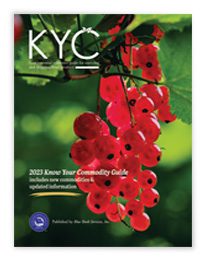Cassava Market Summary


Image: encikcasper/Shutterstock.com
Cassava Market Overview
Cassava, yuca or manioc, Manihot esculenta, is a starchy root crop grown throughout the tropical zone including swathes of the Pacific, Southeast Asia, South America, and Africa. Cassava has been a staple crop for centuries with archeological surveys linking the plant to the Mayan civilization as early as 590 AD.
A member of the Euphorbia flowering plant family, cassava roots and leaves contain traces of the poison cyanide. As such, cassava must be ground, boiled, baked, dried, fermented, or fried before consumption to prevent poisoning.
Cassava root is estimated to contain between 25 to 30% starch although the percentage varies. The most well known form of cassava in the United States involves processing the root into tapioca pearls often enjoyed in bubble tea or tapioca pudding.
Types & Varieties of Cassava
Cassava has a significant number of varieties, ranging in taste from bitter to sweet, but the root crop is not widely grown in the United States. Given its importance to millions elsewhere in the world, there are concerted efforts to develop new varietals adaptable to changing climes. Cultivars are typically classed by pigmentation, leaf shape, stem, and root type, with flesh colors varying from yellow to white.The Cultivation of Cassava
Cassava is grown by cutting mature stems into 12-inch propagules or ‘stakes.’ These are then planted vertically, partially exposed, with the cut facing up or buried in ditches horizontally under two to three inches of soil. Most cassava is planted by hand, however, there are mechanical planters available. Roots and shoots begin sprouting quickly but the plant itself grows slowly, needing weed control. Cassava thrives in warm, sunny conditions in acidic or alkaline soils and can even grow in marginal soils. Plants are drought tolerant but very sensitive to frost, requiring around 8 months of warm weather to produce a viable tuber. The tuber can be left underground for more than one season to allow for additional growth, but, if left too long it will become inedible. In most cases the tuber is harvested by hand, pulling up by the base. Care must be taken not to damage the root as that may lead to reduced shelf life. Shelf life is fairly short, typically from a few days up to 2 weeks, especially if leaves (which are also edible) are removed prior to harvest.



